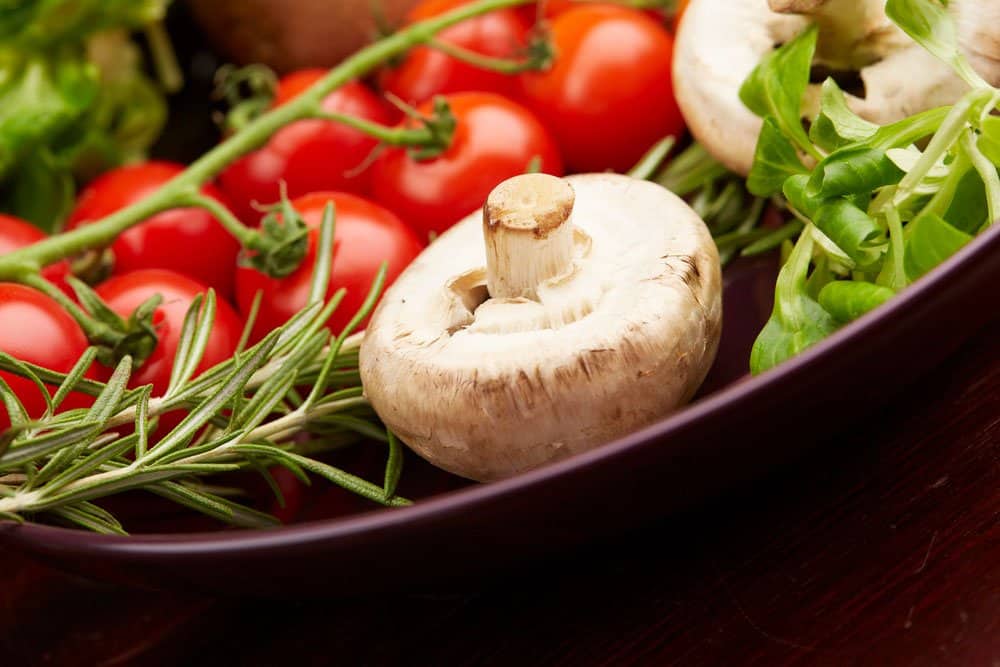Table of Contents
Mushrooms are NOT technically vegetables. Vegetables are obtained from various members of the plant kingdom who have edible roots, leaves, stems, and flowers. In contrast, Mushrooms come from members of an unrelated group of organisms in the Fungal Kingdom.
Mushrooms are NOT vegetables
People everywhere assume mushrooms to be vegetables. It makes sense. They’re pretty similar. After all, they’re tasty in all sorts of savory dishes, and they’re definitely not meat. But as it turns out, Mushrooms ARE NOT vegetables according to technical definitions.
What is a Vegetable?
According to the Oxford Dictionary, the definition of a vegetable is: “Noun: A plant or part of a plant used as food, typically as an accompaniment to meat or fish, such as a cabbage, potato, carrot, or bean.” Other definitions are similar and emphasize their use as a savory ingredient.
Why are Mushrooms not Vegetables?
Mushrooms do NOT come from plants. Mushrooms belong to a separate kingdom of organisms known as “Fungi”. This kingdom also includes yeasts, molds, and a variety of different organisms. Because of this mushrooms ARE NOT vegetables.
Fun Fact: Mushrooms are more related to Humans than they are to plants!
What are Mushrooms?
Mushrooms are the reproductive structure of certain fungi. Mushroom-producing fungi have most of their biomass in white web-like strands called “mycelium”. This mycelium lives within the soil, dead plant tissues, or in symbiosis with plant roots.
In most cases, they get nutrients by digesting and consuming dead organic materials. Only once conditions are right do mushrooms grow. Up until the late 80s, scientist considered mushrooms to be plants. The advent of DNA technology confirmed that mushrooms ARE NOT plants.
Are Mushrooms Fruit?
People often say “fruiting bodies” when referring to mushrooms because of some similarities. This is not accurate. Fruits originate from plants. Since mushrooms are not plants, they are NOT fruits either. Mushrooms are more comparable to flowers from a physiological perspective. Spores found in mushrooms are like the reproductive cells found in flowers. Both only contain half the DNA of an individual.
Differences Between Mushrooms and Vegetables
- Mushrooms are the reproductive structures of certain filamentous fungi.
- Vegetables originate from the roots, stems, leaves, or fruits of different plants.
- Plants produce their own sugars and store energy through the process of photosynthesis.
- Most fungi consume dead plant tissues, from which they get sugars and nutrients. Others may have symbiotic relationships with the roots of plants. They DO NOT conduct photosynthesis and cannot produce their own energy.
- Plants are made of Cellulose and Lignin.
- Fungi are made of Chitin. This is the same component that makes the hard shell of insects.
Culinary Definition of Vegetable and Mushrooms
For the less technical individuals, mushrooms might not be vegetables. That’s fine.
Linguists agree that language is a fluid medium. Cultural context determines definitions. For example, peppers, tomatoes, eggplants, and avocados are TECHNICALLY fruits! Regardless of this, most people consider them vegetables. If you can’t seem to agree with a peer or coworker about the definition, agree to disagree. It’s all semantics anyway!
Frequently asked Questions
No, mushrooms are fungi and not insects. They have some similarities though. Many mushrooms walls contain chitin, which is also common in insect bodies.
No Mushrooms are fungi and belong to their own kingdom. They obtain nutrients differently from animals and plants.

